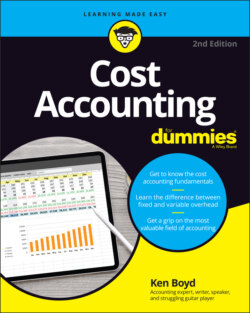Читать книгу Cost Accounting For Dummies - Kenneth W. Boyd - Страница 92
Estimating Costs with Job Costing
ОглавлениеIN THIS CHAPTER
Deciding when to use job costing and process costing
Identifying cost objects
Using job costs to price a product or service
Learning to use a normal costing system
Applying indirect cost to the budgeting process
Job costing is a costing methodology you use when your customers incur unique amounts of costs. Job costing assesses costs by the job and allows you to provide detailed price estimates based on the product constructed or service provided.
By contrast, process costing (the topic of Chapter 16) assumes that individual product costs are nearly the same for every customer. For example, if you manufacture office chairs, each chair of a particular model has the same costs. You use the same amount of metal and material, and assemble the chair using the same amount of labor. If you calculate the cost for one chair, you know the cost for every chair of that model. In other words, the customer does not have the option to create his or her own unique product with unique costs.
Roofs (for example) aren’t like chairs. If your business puts roofs on houses, each client’s costs will be different. The amount of material depends on the type of roof and the square footage. Labor time varies, depending on the roof’s size, pitch, and unique angles. This is an example of job costing.
When you’re deciding on which costing method to use, keep in mind how specific or unique your product or service is. Do the costs differ a great deal from one customer to another? If they do, your business should probably use job costing. Otherwise, use process costing.
In this chapter, you see when job costing is the appropriate costing method to use. You also see how to apply both direct and indirect costs. (If you’re not sure about the definitions of direct and indirect costs, they’re covered later in this chapter.)
